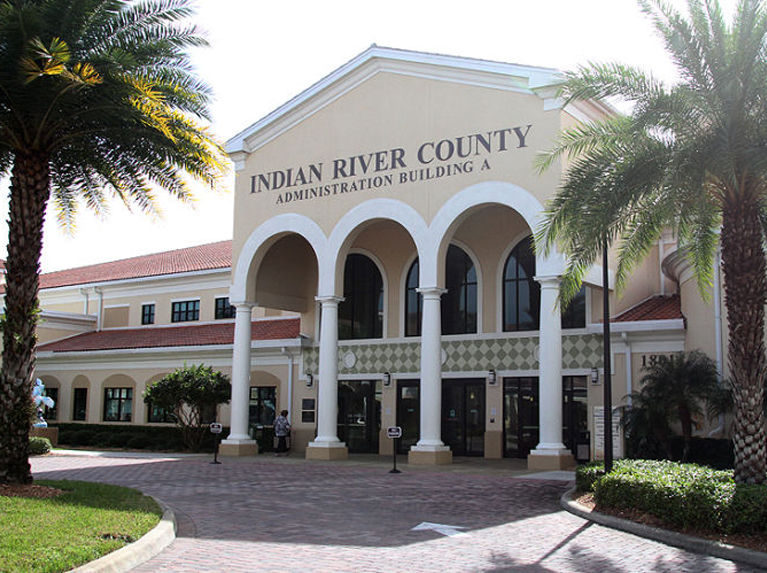
INDIAN RIVER COUNTY — The Board of County Commissioners voted unanimously Tuesday to revamp the schedule of impact fees assessed on non-residential development.
Rather than have unpredictable, fluctuating impact fees, the Board members said they wanted business owners and commercial developers to be able to know what the fee schedule would be for a project long-term and plan accordingly.
Several months ago the county hired a consultant to look at its impact fee structure and to work with staff to come back with options.
The staff recommendations accepted Tuesday will establish a fee structure to be assessed based upon the square footage of the store, restaurant, manufacturing plant or office building the property owner is seeking to build.
Some fees will be eliminated while others will increase slightly. Many will be reduced by 40 to 80 percent, depending upon the type of business and the fee category. The net of all these changes would result in savings for every type of non-residential development.
For example, the owner of a retail building would pay a total of $6,341 in impact fees per 1,000 square feet of building under the current fee structure. Under the new fee plan, the total impact fees would be $4,392 per 1,000 square feet of building – a savings of 30.7 percent, according to the county staff’s presentation.
Banks would save 49.5 percent. General office buildings would save 54.7 percent. Manufacturing facilities would save 53.2 percent in impact fees and fast-food or restaurants would save a total of 39.7 percent under the new plan.
County Planning Director Stan Boling gave a presentation on the history of impact fees in the county and the results of the consultant report that began in January.
“We want to have some certainty to the fees. We want to know that they are reduced and they are reduced to this level,” Boling said.
In regards to the uncertainty of the factors that influence the impact fees, he said “Projections will go up and down. I don’t think we want to be doing this any more than every three to four years.”
Commissioner Tim Zorc raised discussion about manufacturing facilities, specifically the automated manufacturing facilities that offer skilled wage jobs, and how to better attract these types of facilities by being able to provide set impact fee rates prior to a company building or moving in, rather than gambling on different impact fees once they are already settled.
Commissioner Wesley Davis also expressed a desire for greater consistency, to “have a specific package ready to go. That way there are no questions, no discussions — that is your category.”
Chairman Peter O’Bryan commented that he liked having the rate schedule tied to what the county will need in the way of capital improvements.
“That seems like a lot better planning. I think we have a good plan here to go forward,” O’Bryan said.
Zorc requested the Board be informed annually of growth rates.
For nearly 30 years, the county has charged traffic impact fees for every new home or business to help pay for the wear and tear of the extra vehicles and trips that structure will put on the roadways, and the new or enlarged roadways that would need to be built.
Then in 2005, in response to rapid growth, the county expanded the categories of impact fees it charged, providing hundreds of millions of dollars to increase the county’s capacity to provide law enforcement protection, fire and emergency medical services, jail cells and buildings, water and sewer utility infrastructure, parks, recreational facilities and public buildings during the real estate boom of the mid-2000s.
According to case law, certain categories of impact fees must be used in a time frame of six years or they will “sunset,” meaning that they are then due to be refunded to the property owner.
In the past couple of years, it was brought to the county’s attention that residents were owed large sums of money in these unused impact fees. The county issued refund checks to hundreds of people who paid impact fees decades ago.
Since the mortgage crisis and recession of 2008, the county has placed a moratorium on several classes of impact fees in an effort to encourage new development, to create jobs and to enhance the tax base.
The Indian River School District also imposes impact fees, which are collected by the county, but only on residential development, as increased student population is derived from new homes and apartments, not from new retail shops or manufacturing facilities.
County Administrator Joe Baird has said it’s uncertain whether or not the School District will charge impact fees in the coming year.
In the coming months, after the School Board determines whether or not it will collect impact fees for the coming year, the County Commission will go back and consider staff recommendations for restructuring residential impact fees as well.



